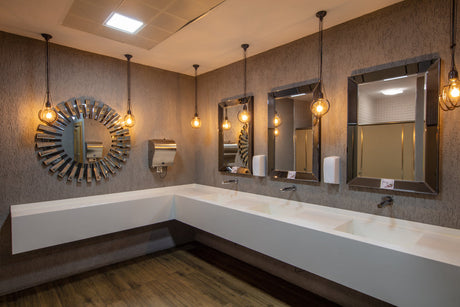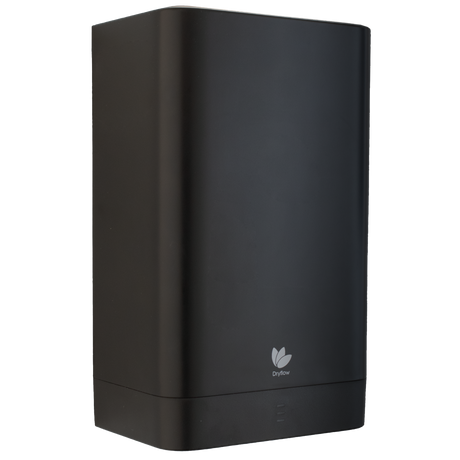21/10/2022
Schools in the UK house more than 10 million children and young adults, who spend around a third of their lives at school. – 70% of this school time is spent indoors . So, it’s therefore really important that schools provide their students with the best possible indoor environment for learning.
Article in Summary – Indoor air quality is a real issue for schools, and the effects of poor air quality can have serious short and long-term effects on both students and staff.
So, a few things that schools can do to improve their air quality is: remove harmful building materials, use weather stripping, install a ventilation system, or install air sterilisers.
A Guardian report found that 802 schools, nurseries and colleges in London – out of 3,261 – were ‘ located within 150 metres of areas where levels of nitrogen dioxide breach EU legal limits ’. And indoor air pollution can be even worse.
Not only does it affect children’s ability to learn and their comfort whilst at school, but air pollution has serious health consequences. It can cause or contribute to short- and long-term health problems , including:
- Asthma
- Respiratory infections and diseases
- Allergic reactions
- Headaches
- Eye and skin irritations
- Coughing
- Sneezing
- Fatigue
- Dizziness
- Nausea

In a UNICEF report, it was found that around three quarters of the 4000 European child deaths caused by diseases linked to air pollution, can be linked to indoor air pollution .
Children are particularly vulnerable to harmful and irritating air pollutants such as chemicals and ultrafine particles . This is because their bodies are still developing, and air pollution has a direct effect on their lung development.
With the number of children looking for places at schools in the UK increasing every year, this will undoubtedly mean an increased likelihood of densely populated classrooms, leading to elevated CO2 levels . These elevated CO2 levels are one of the major pollutants that drives poor air quality in schools.
Indoor air pollution and the quality of the air in schools has never been more crucial.
What causes poor indoor air quality in schools?
Indoor air quality (IAQ) tends to be defined by the concentrations of the following pollutants :
- CO2
- Volatile organic compounds (VOCs)
- Moulds
- Dust
- Airborne fungi
But outdoor pollutants, such as vehicle exhaust and factory emissions , can also make their way into schools, especially if the school is situated in an area with high levels of air pollution.
Schools are often unaware of what it is in the building that causes indoor air pollutants to build up. Older buildings tend to have problems with lead and asbestos contamination , as well as mould that may have been caused by leaky roofs, and dust from deteriorating walls.
However, newer school buildings aren’t immune. These buildings tend to be quite tightly sealed, so there’s reduced natural ventilation, resulting in less fresh air flowing into the school building.
But it isn’t just the school building itself. Your typical day-to-day products such as air fresheners, glue, and paint, also contain a number of air pollutants such as VOCs, that can cause serious health effects for both students and staff.
What can you do to improve the air quality in your school?
Ensure harmful building materials are removed
- This applies mostly to schools built before 1990, as they’re likely to have materials in their buildings that contain harmful substances, such as lead and asbestos.
- Both these substances can cause serious long-term health conditions, from respiratory issues to damage to the heart and kidneys.
Use weather stripping
- This is the process of sealing up the gaps on windows or at the bottom of doors, to prevent air from leaking.
- Sealing the gaps in your school will help to make sure you have just the right amount of ventilation throughout the whole school year.
- This will also prevent moisture from leaking in, which would end up causing mould.
Install ventilation systems
- The simplest way to do this is by simply opening up doors and windows to allow fresh air to circulate throughout your school.
- But as we mentioned earlier, if the outdoor air is also heavily polluted, then this could cause more problems than it would solve. So, it might be a better option to install a ventilation system to filter the air for you.
Install air sterilisers
- If installing a ventilation system is not possible, then a low-cost but still highly effective alternative is the use of air sterilisers.
- These are devices that use a technology which creates UV light, ozone, and negatively-charged ions. These all exist in the environment already, so are safe, and are actually quite powerful methods of disinfection.
- They eliminate bacteria, viruses, mould, and can break down unwanted chemicals and smells – contributing to an improvement in indoor air quality.
- You can find out more about air sterilisers and how they work in our guide we put out recently.

Our complete range of commercial and domestic air sterilisers and air purifiers can be found on our website. Alternatively, you can call one of our specialist advisors to help identify the right air sterilising solution for your facilities on 0114 3540047.





